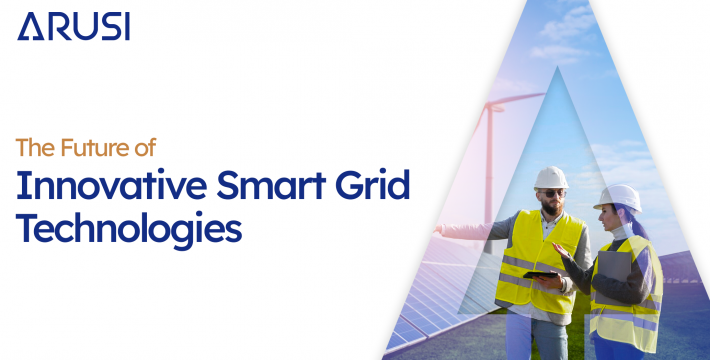
In the heart of every modern city lies an intricate web of power lines, substations, and transformers, all working in harmony to power our homes, businesses, and public spaces. This vast network, known as the electrical grid, has remained largely unchanged for decades.
As the world shifts towards renewable energy sources and demands more efficient power management, the traditional grid is undergoing a radical transformation. Enter the era of the smart grid, a technological marvel that promises to revolutionize how we produce, distribute, and consume electricity.
The Rise of the Smart Grid
The smart grid is not just a single technology, but a combination of advanced tools and techniques designed to make the electricity grid more responsive, reliable, and efficient. At its core, the smart grid uses digital technology to monitor and manage the flow of electricity from all generation sources to meet the varying electricity demands of end users.
Real-Life Examples of Smart Grid Innovations
Demand Response Programs: In places like California, utilities are implementing demand response programs that incentivize consumers to reduce their electricity consumption during peak demand times. For instance, on a particularly hot day when everyone is using their air conditioners, utilities might send a signal to participating households to temporarily adjust their thermostats. In return, these households receive a discount on their electricity bills.
- Microgrids: The Brooklyn Microgrid in New York is a prime example of how localized energy networks can operate alongside the main grid. This microgrid allows residents to trade solar energy amongst themselves using blockchain technology. In the event of a major grid failure, the microgrid can operate independently, ensuring that residents still have access to power.
- Advanced Metering Infrastructure (AMI): Traditional meters only measure total electricity consumption. But AMI, or “smart meters”, provide real-time data about electricity consumption. This allows both utilities and consumers to monitor and manage electricity usage more effectively. Chattanooga, Tennessee, for instance, has installed a city-wide AMI system, leading to reduced power outages and more efficient electricity distribution.
The Benefits of Smart Grid Technologies
The advantages of transitioning to a smart grid are manifold:
- Enhanced Reliability: With real-time monitoring, utilities can quickly detect and fix issues, reducing the duration and frequency of power outages.
- Integration of Renewable Energy: Smart grids can better handle the variable nature of renewable energy sources like wind and solar, making it easier to integrate them into the overall energy mix.
- Consumer Empowerment: With tools like smart meters, consumers can monitor their electricity consumption in real-time, allowing them to make informed decisions about their energy use.
- Economic Growth: The development and implementation of smart grid technologies can lead to job creation in fields like IT, engineering, and renewable energy.
Advanced Features of the Smart Grid
- Grid Automation and Self-healing Systems: One of the most promising features of smart grids is their ability to automatically detect and respond to system problems. For instance, if a tree falls on a power line, the grid can isolate the affected section and reroute power, minimizing outages. This self-healing capability ensures consistent power supply and reduces the need for manual intervention.
- Electric Vehicle (EV) Integration: As the adoption of electric vehicles grows, smart grids will play a pivotal role in managing EV charging demands. Smart charging stations can communicate with the grid to draw power during off-peak times, ensuring that the grid isn’t overloaded during high-demand periods.
- Home Energy Management Systems: Smart grids are complemented by home energy management systems that allow consumers to automate and optimize their energy consumption. For example, smart thermostats can learn a user’s schedule and adjust heating or cooling accordingly, while smart appliances can operate when energy is cheapest and most abundant.
- Interconnected Sensors and IoT: The integration of sensors and Internet of Things (IoT) devices into the grid provides real-time data on everything from power consumption to equipment health. This vast network of interconnected devices allows for more precise monitoring and better decision-making.
- Decentralized Energy Systems: With the rise of renewable energy sources like solar panels and wind turbines, many consumers are becoming energy producers. Smart grids can manage these decentralized energy systems, allowing consumers to feed excess power back into the grid or store it for later use.
- Enhanced Cybersecurity Measures: As the grid becomes smarter, it also becomes a target for cyber threats. Advanced encryption methods, continuous monitoring, and rapid response protocols are being developed to protect the grid from potential cyber-attacks.
- Predictive Maintenance: Using AI and machine learning, smart grids can predict when equipment is likely to fail and schedule maintenance before it becomes a problem. This not only reduces downtime but also extends the lifespan of grid infrastructure.
Arusi: Pioneering the Future
As businesses grapple with the complexities of the modern world, they need partners that can help them navigate the challenges and seize the opportunities. Arusi, with its expertise in telecommunication and engineering, is at the forefront of this transformation.
Arusi understands that in an interconnected world, businesses need robust telecommunication systems to stay competitive. Whether it’s setting up advanced communication networks or integrating IoT devices, Arusi provides end-to-end solutions tailored to the unique needs of each business.
In the realm of engineering, Arusi’s team of experts is helping businesses harness the power of smart grid technologies. From designing microgrids to implementing demand response programs, Arusi is helping businesses not just adapt to the future, but shape it.
Closing Thoughts
The future of electricity lies in the smart grid. As we transition to a world where renewable energy sources dominate and consumers demand more control over their energy consumption, the smart grid will be at the heart of this transformation. And with partners like Arusi, businesses are well-equipped to lead the charge into a brighter, more sustainable future.


